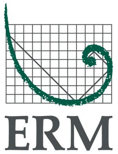ERM has a mature and comprehensive Safety Management System (SMS), which incorporates safety-related policies, roles and responsibilities, training, programs and initiatives and mechanisms to measure the effectiveness of our management approach.
The SMS governs our approach to minimizing safety and environmental risk, and it is based on Occupational Health and Safety Assessment Specification (OHSAS) and International Organization for Standardization (ISO) requirements.
FY20 was a stellar year with respect to ERM's occupational health and safety performance, as measured by leading and lagging indicators. Highlights include:
- Safety at ERM: each of our four of our regions posted weighted averages above 80, and company-wide we scored 90.2 (our target for each region and company-wide was 65);
- Active Leadership: our performance as measured by Partner engagement, exceeded last year by more than 29%.
- Internal safety recognition: our Safety AT ERM awards increased by 76%, Safety AT ERM STAR awards increased by 153% and our quarterly recognitions increased by 127%.
- Days Away from Work case rate: with a rate of 0.08, our performance was better than our company-wide target of 0.10.
- Our global tools and systems support continuous improvement as we work on complex projects, often in challenging environments. Our global Health, Safety and Environment (HSE) Policy Statement, which is endorsed by our Group CEO and Executive Committee, applies worldwide and is conveyed to all employees through our induction programs and routine communications.
- ERM Partners and other leaders have personal safety goals included in their performance metrics, with progress against these goals assessed as part of the annual performance review process.
- During FY20, ERM completed 4,574 individual office, project, field or subsurface clearance audits using our online tool, with 3,361 of those audits completed by Partners. The audits are part of our Active Leadership Audit Program (ALAP), and they provide us with a tremendous amount of safety performance data that allows us to focus on specific areas for improvement.
- New hires are required to take safety training as well as anti-bribery, corruption and ethics training. Compliance with this requirements is shared with senior management. In FY20, 96.5% of new hires completed their mandatory training on time in a record year for new hires. In FY21, we are focused on improving this rate.
- Travel is a key part of the work we do for our clients and an important part of running the business. We provide health and safety support for our employees traveling around the world. This is particularly important in more challenging locations, including those classified as high risk based on medical, integrity, political or security factors. We provide time-critical advice in response to travel and acute medical issues around the globe. Our online Travel Risk Assessments help ensure that employees and those we work with are well prepared for their journey, and that our Partners review and approve this travel. In response to the COVID-19 pandemic, travel was significantly restricted, and all travel, even if not restricted by government authorities, must be assessed to determine whether it is business essential.
- ERM’s Executive Committee members receive daily reports on key safety performance metrics as part of their management dashboards. Safety metrics appear alongside other key business indicators, such as sales, revenue and profits.
- Our global mobile phone policy establishes a global standard regarding the prohibition of use of any mobile/cell phones, computers and all other personal digital assistants (PDAs) or similar electronic devices while operating a personal, company-owned or rental vehicle as part of the company’s health and safety requirements. In addition, this policy clarifies ERM’s position with respect to any devices used for navigation while operating vehicles as set out above.

